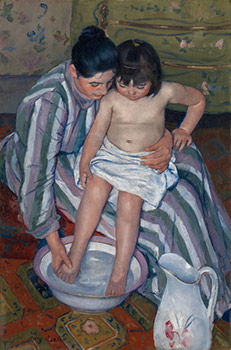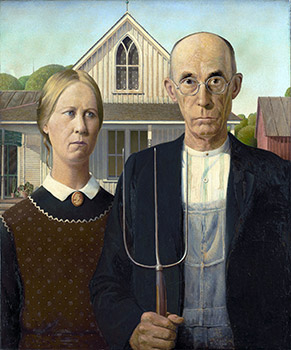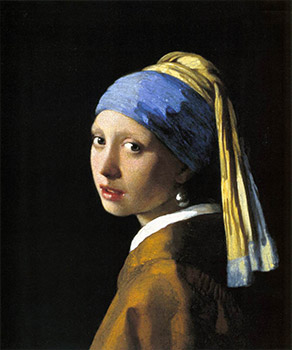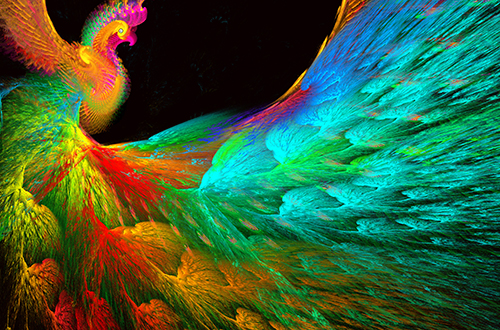Learn
Harmony, Emphasis, and Variety
Harmony is a principle of art that combines similar elements of art in a composition to create a pleasing appearance.
Harmony involves the selection or design of elements that share a common trait. It is also referred to as unity in art.
Harmony is created by using three items: repetition, simplicity, and proximity.
Repetition is the repeating of elements such as shapes, forms, colors, lines, textures.

Harmony is evident in Mary Cassatt's The Child's Bath (1893) because of the artist's use of lines, textures and repeated colors throughout the work. See a larger version of The Child's Bath here. Image is in the public domain.
Simplicity is the simplifying of elements, such as colors (color scheme), shapes, or forms.
Proximity is limiting the amount of negative space within the picture plane of an artwork.

Harmony is evident in Grant Wood's American Gothic (1930) because of the artist's use of simplicity and limiting the amount of negative space. See a larger version of American Gothic here. Image is in the public domain.
Emphasis is the part of the design that catches the viewer's attention. Usually the artist will make one area stand out by contrasting it with other areas. This is the focal point, or the area in the composition that has the most significance and the area that the artist wants to draw attention to as the most important aspect. The area could be different in size, color, texture, shape, etc.

Emphasis helps the artist control what part of the artwork that the viewer looks at first. It also helps the artist control how long the viewer will look at each of the different parts.
Emphasis is achieved by using contrast in a work of art. Contrast is simply defined as difference; it can be difference between art elements like color, value, size, texture, and contrast can intensify the elements used.

Look at some examples of emphasis below.

Johannes Vermeer, Girl with a Pearl Earring, 1665, oil on canvas. See a larger version of Girl withe a Pearl Earring here. Image is in the public domain.
Open Rene Magritte's The Son of Man (1964) to see another example of emphasis.
Variety is the use of several elements to hold the viewer's attention and to guide the viewer's eye through and around the work of art.

Variety is concerned with combining art elements by adding slight changes to increase the visual impact of the artwork.
Variety complements harmony (or unity in art) and creates visual interest in an artwork.
Look at the following works of art to see examples of variety:
